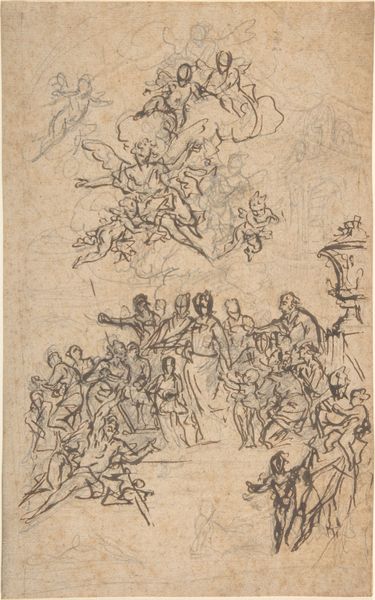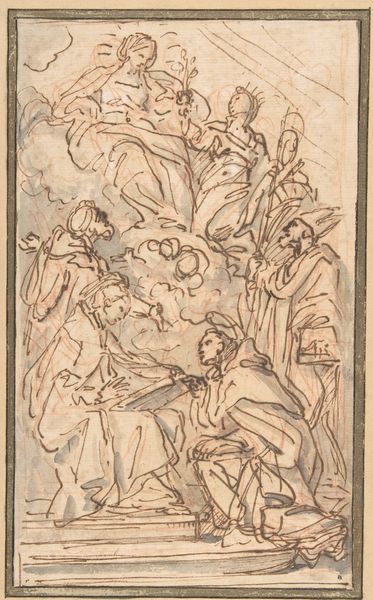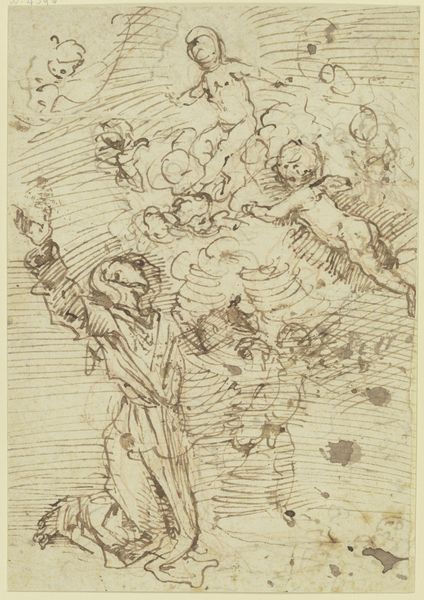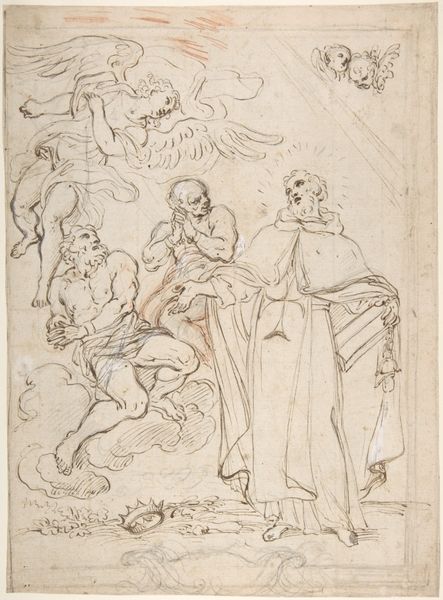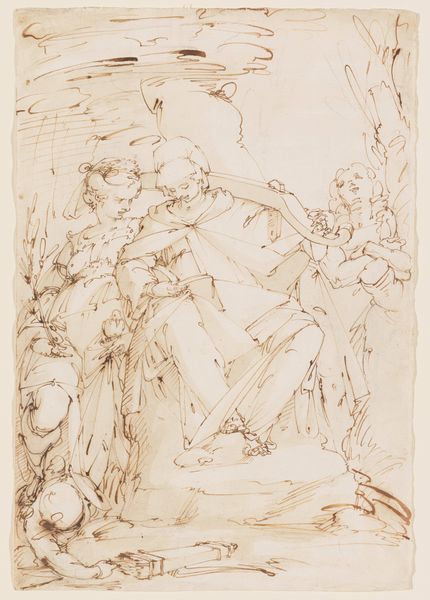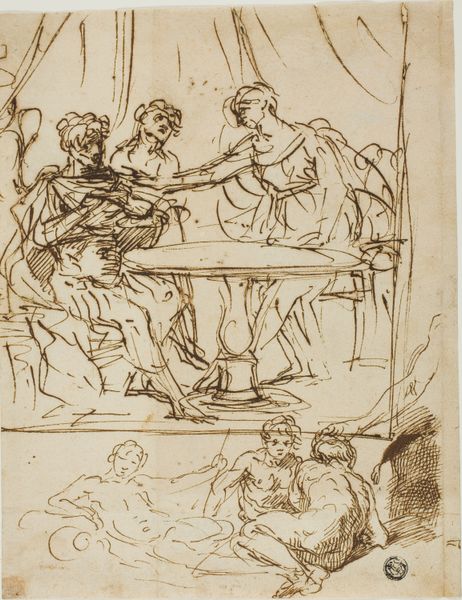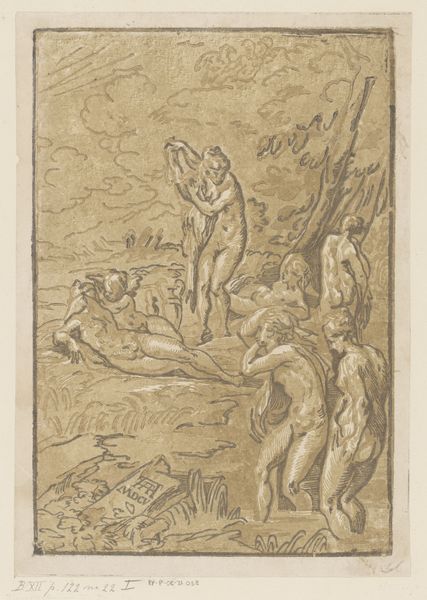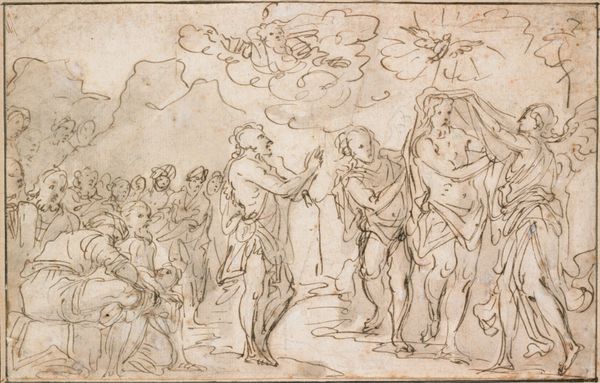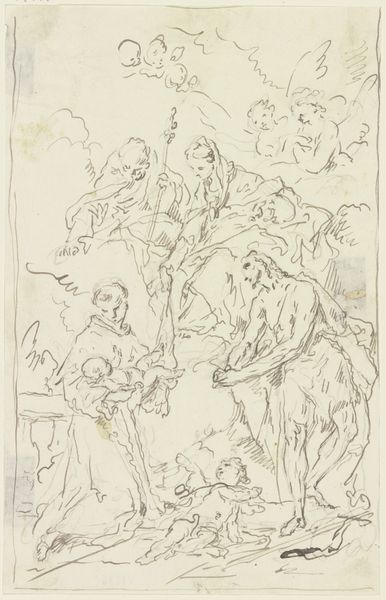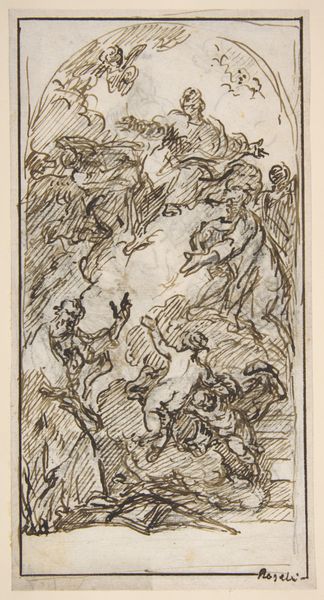
drawing, ink, pen
#
drawing
#
ink drawing
#
baroque
#
pen drawing
#
ink
#
pen
Copyright: Public Domain
Curator: This drawing, “Johannes predigt in der Wüste,” by Jacques Callot, features pen and ink work on paper. It's part of the Städel Museum's collection, and offers a compelling glimpse into Callot's mastery of line and form. Editor: It's arresting. The stark contrast and the figures, especially John, emanate an intense energy. One immediately senses the dramatic moment, even before knowing the subject. There's a feeling of urgency in his gestures. Curator: Absolutely. If we look closely at the textures, especially the layering in the garments, we can see Callot’s understanding of light and shadow, building up forms with remarkably economic lines. Editor: And considering the historical context, the act of preaching, of dissenting voices rising in a landscape both literally and figuratively barren, resonates deeply. What might it have meant for Callot's contemporary audience to witness this representation of John's radical challenge to the established order? Curator: That's a great point. We know Callot was active during a time of significant religious and political upheaval in Europe. He trained in Italy, but his work circulated throughout Europe via printmaking—which broadened access, allowing this image and his other works to spark widespread debate on political reform. Editor: How might the materials themselves—the pen, the ink, the readily available paper—have affected Callot's artistic decisions? These aren't precious, monumental materials suggesting a monumental power. They suggest portability, transmission of ideas, dissemination...even resistance. Curator: Indeed. Ink, as a drawing material, is quick to make. Combined with printmaking technologies it amplifies a political argument—but that's a dangerous move in a society under tight authority! We can imagine those images moving illicitly from hand to hand and the role played by material factors like paper. Editor: And look at John's bare feet and tattered robe, versus the head coverings and draped fabrics on the people in the crowd with him! This juxtaposition highlights the class divisions, as John’s own intentional destitution prefigures the voluntary poverty espoused in various forms of Liberation Theologies. Curator: You've introduced some vital cultural and socioeconomic context into what might initially seem purely representational—shifting the view toward agency and the reception of those bold stances, thanks for sharing this interpretation. Editor: Thanks! It feels vital to acknowledge how artistic materials can intersect so powerfully with social justice!
Comments
No comments
Be the first to comment and join the conversation on the ultimate creative platform.
